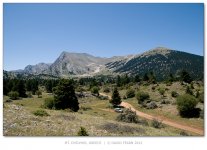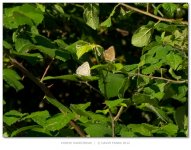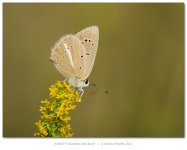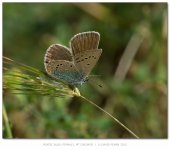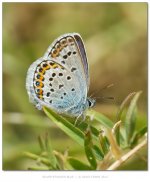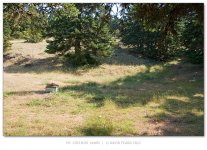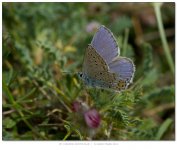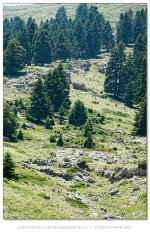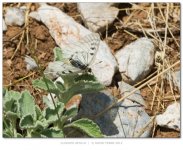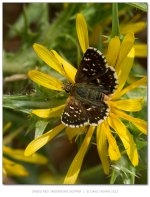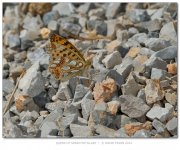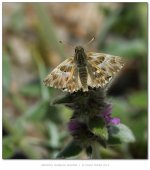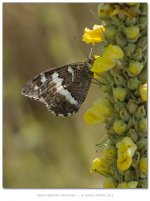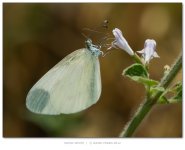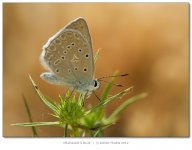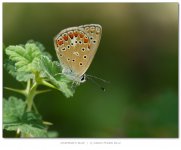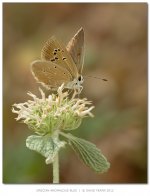Day 2, 29th June (continued)
...
Mt. Chelmos 1446m
After winding my way around numerous hairpin bends, I arrived at a small grassy area on one such bend, with a single disused beehive, a steep rocky meadow, and a small track up a slope through the pines. On closer investigation, the grass contained flowering purple Vicia dalmatica, which I knew was the larval host plant for a Mt. Chelmos endemic, Pontic Blue (Neolysandra coelestina). Surely worth a closer look…
In the grass immediately adjacent to the car I found, along with Common Blue, Large White, and Silver-Studded Blue•, a single female Pontic Blue•. Though fairly well worn, its green basal underside scales on a brown ground made it pretty unmistakable, and quite lovely to see.
On this visit, I just stopped to explore this immediate grassy area, since I was keen to press on to higher regions of the mountain.
I pressed on uphill, and turned off onto a dirk track on the left upon reaching the Xerokambos area just before the final straight bit of tarmac uphill for the last few hundred metres before the Ski Centre car park. Driving past some shepherds’ huts, I headed for an area at 1600m where I had researched as an open meadow area with a good range of Blues species possible. The photo in the first post of this thread is taken from this location.
Xerokambos area, 1600m
Here I saw large quantities of Silver-studded Blues, Brown Argus, Clouded Yellow, Glanville Fritillary, Balkan Marbled Whites, Brimstone, Small Skipper, and one Skipper I was unable to ID but which may have been Olive Skipper.
After spending some time wandering around this area, I got back to the car, retraced my steps, and followed the tarmaced road across the Xerokambos before descending down the north east side of the mountain (passing through a herd of goats very stubbornly stationed right in the middle of the road!) and arriving at some steep densely scrubby slopes, with a parking area next to a ‘bandstand’ type viewpoint area overlooking the Styx Valley north face of the Chelmos...




